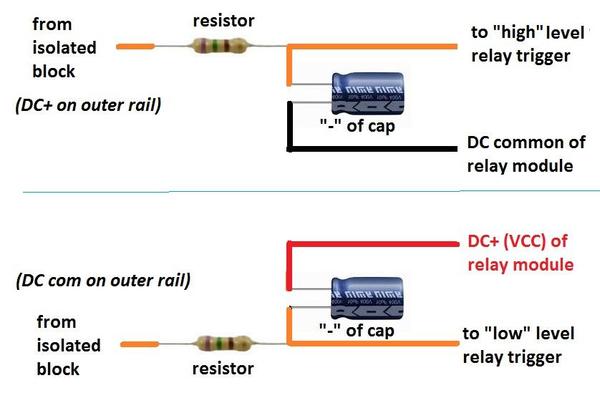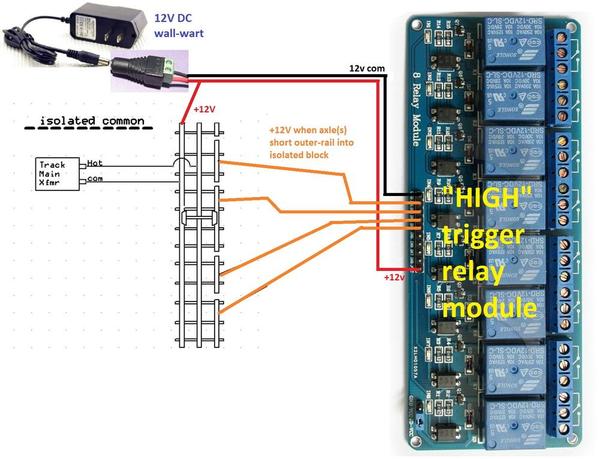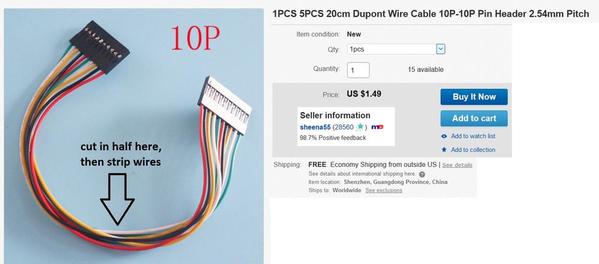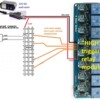Yes, you can experiment with a 5V low-level relay module. Obviously you need to power the relay module with a 5V DC wall-wart. Confirm a relay indeed clicks "on" when you apply DC common to the corresponding input pin. *** Edit: see footnotes ***
Then to mess with relay chatter (dirty wheels, axles, whatever) insert a resistor and capacitor between the isolated block and the relay module input:

The R and C values are not that critical. Something like 22 ohms (1/4 Watt) and 47uF (25V or more) would be a good starting point. This will demote chatter in the fraction-of-a-second range typical with intermittent wheel-track.
Note that the eBay relay modules have a transistor amplifier on the control inputs so that you can trigger a relay with far less current than if you directly drive a relay coil. This allows you to use a relatively small capacitor; that is there are several circuit diagrams floating around using R and C to de-chatter isolated rail relays where the DC relay coil is directly attached to the isolated block via a diode. In that case you typically need capacitors in the 100's or 1000's of uF (larger and more expensive) to be effective for intermittent wheel-track issues.
*** Footnotes
1. I simply ask you (or anyone) to double-check the high vs. low functionality of the relay module before embedding it. That is, I was looking at the photos in your high-level relay module eBay listing and I'm convinced it is showing a low-level module based on component values and such. Of course these may be stock-photos showing what the module looks like rather than the actual item...
2. One reason to go with a 5V relay module in your case is to mix/match occupancy detection methods. You mentioned having tried photocells or whatever and I showed an example in the other thread of a $2 modulated infrared module that ought to work much better in terms of ambient light issues. That module runs on 5V DC which you'd already have so it could mate directly to a 5V relay module with minimal fuss. In other words you have the equivalent of an ITAD for a tiny fraction of the cost!
![]()




















